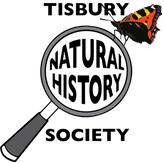|
We are fortunate to have a range of lakes and pond in the vicinity of Tisbury. These make popular destinations for walks, are great places to look for birds and at this time of year attract increased number of wildfowl which overwinter there awaiting a new breeding season.
Fonthill Lake is the largest and close to a score of waterbirds may be seen there in winter. We are all familiar with the Mute Swans, Mallard, Coots, Grey Heron and Tufted Duck which may be seen all the year round. But it is only in the winter months that the Goosanders arrive. These are quite large diving ducks of the sawbill family (so called because of the serrations on their bills used for catching fish). The male is a very handsome black and white bird with a glossy dark green head which contrasts with its bright red bill. They appear to be quite gregarious so if there are any present, they are generally all in a group rather than scattered across the lake like the swans for example. Their numbers are increasing throughout the country so we might be seeing growing numbers at Fonthill in winters to come. Another handsome bird is the Mandarin. Although the female of this neat little duck is largely brown and grey with a distinct white eye stripe, the male is much more striking with multicoloured plumage. It has a red bill, broad white eye stripe, orange ruff like feathers on the side of its neck, more orange sail-like feathers sticking up above its back and patches of purple and dark green elsewhere. If you catch a view of one in bright sunshine it looks terribly exotic. It was introduced from China (hence the name) and has naturalised after escaping from private collections. It likes lakes and ponds with lots of overhanging vegetation and can sometimes be seen sitting on branches above the water. We are becoming used to seeing Little Egrets (a small white heron with bright yellow feet and a black bill) on local lakes, ponds and watercourses so it is surprising to think that they only started colonising the UK in the late 1990s. Far less frequent but occasionally to be seen in the Nadder Valley and its waterbodies is the Great White Egret, another relatively recent colonist. It is possible to confuse these two Egrets when apart, but the Great White is much larger – the size of a Heron – and has black feet and a longer, yellow, dagger-like bill. A third species, the Cattle Egret, has also expanded its range across Europe, and first bred in the UK on the Somerset Levels in 2008. Who knows how long it will be before they are seen around here? In contrast to the Goosander, some other duck species favour salt water and winter off our coasts. However, when there is a particularly bad storm some of these might be driven inland and can turn up anywhere, so it is always worth having a close look at the wildfowl around us in winter especially after really bad weather. by Andrew Graham Comments are closed.
|
Photo: Avocets (Izzy Fry)
The headers display photos taken by our members. Do get in touch via the Contact Form if you'd like to submit a photo for selection.
Archives
May 2024
Categories
All
|

 RSS Feed
RSS Feed